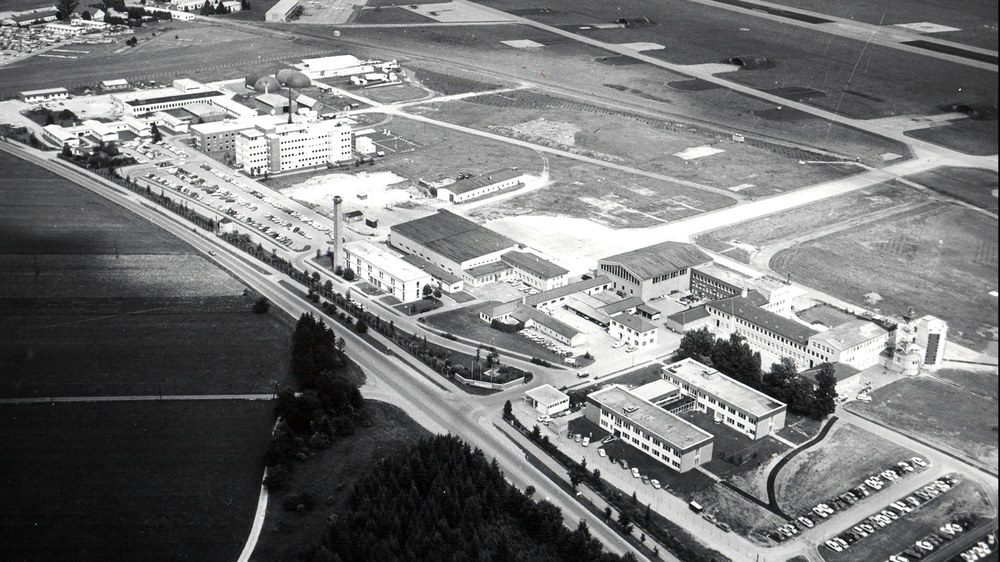History
Beginning of the 80s | Development of the first European GPS receiver at the Institute |
1985 | Time experiments on the D1 mission (Spacelab on Shuttle): (one-way and two-way time transfer, verification of relativistic corrections, experiments to determine the position of Spacelab and ground stations |
1986 | first digital voice transmission from airplane to ground |
1989 | The soft-output Viterbi algorithm - an innovation in the field of coding processes. This became one of the most important milestones in the development of digital transmission technology. |
90s | With optical free-space communication, the institute has already taken up another topic of the future and is now one of the leading research institutions in this field. |
1994 | The satellite modem designed at the Institute for variable bit rates of up to 8 Mbit/s was implemented by industry and used in the INTELSAT ground station. |
1996 | The multi-carrier CDMA process was patented. It was of fundamental importance for 4th generation mobile communications (4G) and terrestrial aeronautical radio. |
ca. 1997 | Standardization of the hierarchical coding and modulation process developed at the Institute for terrestrial digital television DVB-T |
1995-2000 | Conducting preliminary studies on a European navigation system |
2002 | Spin-off of the company TriaGnoSys GmbH |
2003 | Definition of the Galileo system time |
2005 | Information transmission with light: the first laser downlink succeeds - from a stratospheric balloon to the optical ground station in Oberpfaffenhofen. |
2006 | Optical connection from the Japanese satellite KIRARI to the ground station in Oberpfaffenhofen . |
In January 2006, the signals from the first Galileo experimental satellite GIOVE-A were evaluated using the 30-meter antenna in Weilheim. | |
2007 | First proof of the digitally steerable antenna for satellite communication in the Ka-band successfully demonstrated in ground and flight experiments. |
2008 | The institute demonstrates an optical connection between an airplane and the ground for the first time. |
Appointment as DLR Center of Excellence for Safety of Life Communications | |
2009 | Spin-off of the company ViaLight Communications Gmbh, today Mynaric AG |
In the Foot-SLAM (SLAM = Simultaneous Localization and Mapping) project, the institute is demonstrating how precise pedestrian navigation in buildings can be achieved with the help of inertial sensors | |
2010 | World's first demonstration of network-coded bidirectional communication in a satellite system |
First RCAS prototype successfully tested in real trains (RCAS = Railway Collision Avoidance System) | |
GALANT receiver: First demonstration of a robust multi-antenna receiver for Galileo signals | |
Appointment as DLR Center of Excellence for Satellite Navigation | |
seit 2011 | Contributions and work to establish a system with which maritime PNT data (PNT = Position, Navigation and Timing) can be provided in an interference-free manner. Important steps have been taken towards standardization by the International Maritime Organization (IMO). (Neustrelitz) |
First quantum key distribution from an airplane to an optical ground station - a success for which the scientists were awarded the Erwin Schrödinger Prize in 2015. | |
GBAS CAT III - New navigation system successfully tested and demonstrated in flight trials with ATTAS | |
DLR presents world's first LDACS demonstrator | |
2012 | Spin-off of the company Intelligence on Wheels GmbH |
Proposal and initial flight tests to demonstrate the APNT capability of LDACS1 (LDACS-NAV) | |
The robustness of the GALANT receiver against interference signals is demonstrated in a measurement campaign carried out in 2012, in which the "NEWARK interference scenario" is simulated. | |
2013 | Inauguration of the new building for the Institute of Communications and Navigation |
Experimental testing of an operational composite clock for calculating the deviation of atomic clocks and system time. | |
Demonstration of a multi-channel population warning system for disaster situations with integration of various satellite links | |
First demonstration of a laser link from a jet fighter to a ground station over a distance of more than 60 km and at a flight speed of 850 km/h. | |
First demonstration of the Networking the Sky concept using the A320 ATRA research aircraft for integrated communication of all existing and future data links in the aircraft | |
2014 | First stage of a reliable warning and forecasting system for disruptions to technical systems caused by solar storms developed (Neustrelitz) |
Experimental verification of Channel-SLAM: Utilization of multipath propagation allows paradigm shift in mobile radio-based navigation | |
2015 | First dual-frequency and dual-constellation GBAS flight tests successfully conducted |
Development of cooperative FootSLAM for indoor navigation | |
Initiation of the standardization of LDACS by the ICAO | |
2016 | The Institute of Communications and Navigation celebrates its 50th anniversary |
First direct train-to-train data communication between high-speed trains for the virtual coupling of trains | |
World record - optical transmission with 1.72 terabit/s, world record - 2018 with 13.16 terabit/s | |
2018 | Inducted into the Space Technology Hall of Fame (DLR & Mynaric) |
First demonstration of swarm navigation with a fleet of 6 rovers | |
2019 | First flight of LDACS with first demonstration of cyber-secure applications |
First demonstration of swarm exploration to locate gas sources | |
First measurements of radio propagation between drones in an urban environment | |
2020 | Start of the standardization of VDES |
2021 | First demonstration of magnetic field-based train navigation across Germany |







